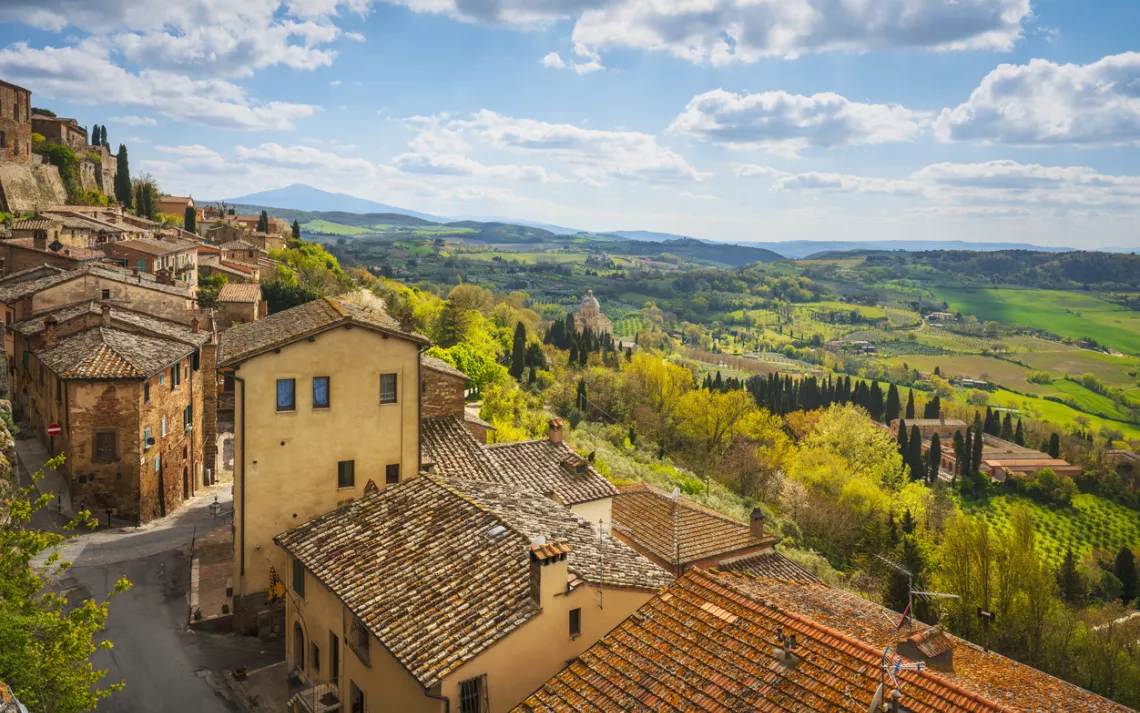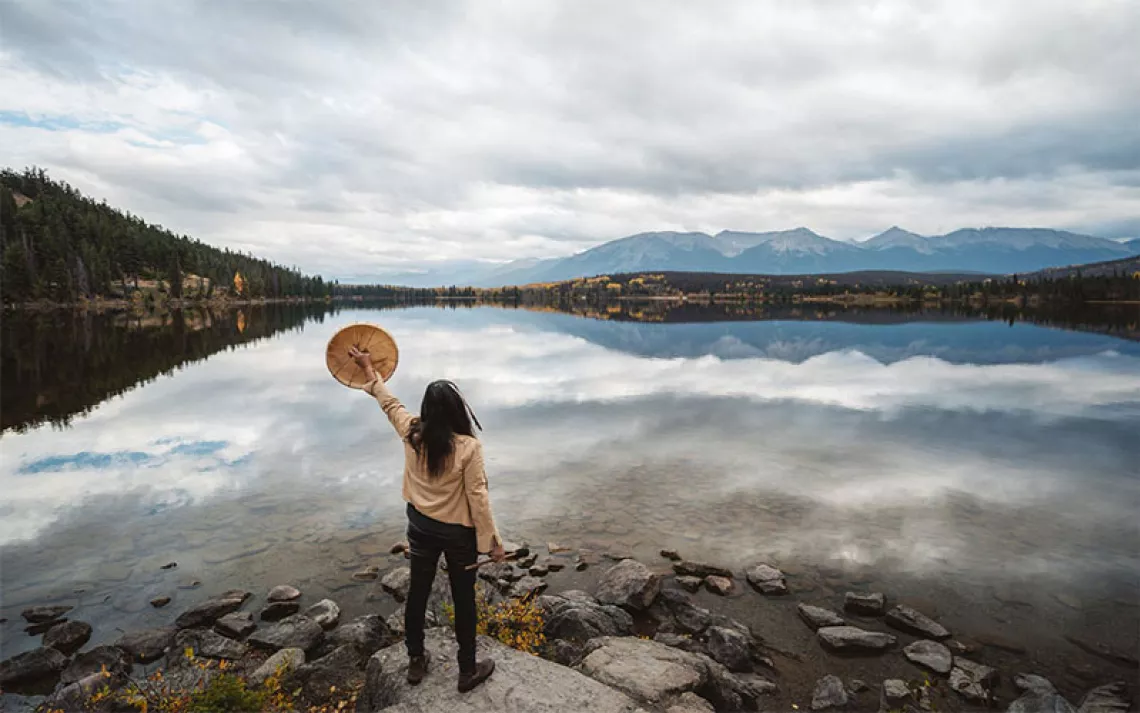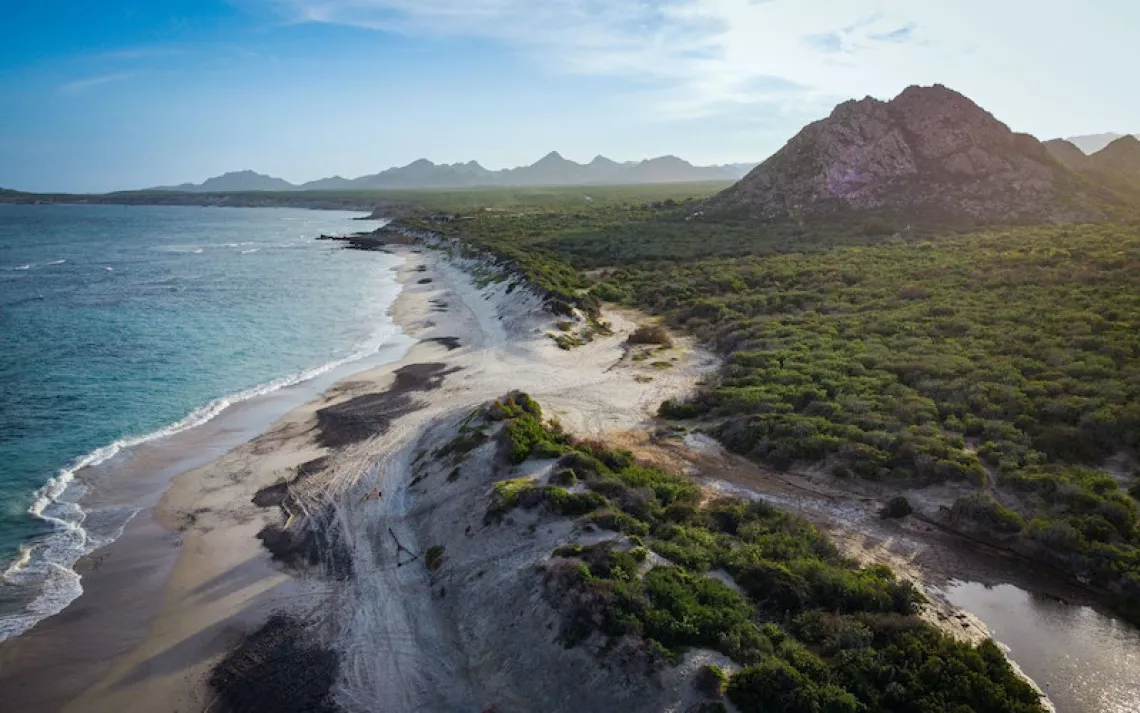Bella Italia
The civilized approach to conservation

There is no word in Italian for "wilderness." Dictionaries suggest selva, "forest," or deserto, "desert," but both fall short of the mark. Nor does natura quite capture our romantic New World notion of virgin territory "untrammelled by man," as it says in the Wilderness Act. You can get plenty lost in the backwoods of Italy, but no Italian would ever imagine he was the first person to set foot in a particular spot. In a country literally built on the ruins of the past (the local branch of the World Wildlife Federation claims that Italy has 40 percent of the world's cultural heritage) such a conclusion would be laughable.
In Italy, nature, culture, and history are hopelessly entangled. Wandering in the Valnerina, a deep valley in central Italy east of Spoleto, my wife and I make our way up into the hills along the route of an abandoned railroad, tracks long since removed. The incline is gentle but the winding tunnels are unnerving, especially when we lose sight of the light at the end of them. The path is lined with oak woods, wild enough to the American eye but for the periodic signs proclaiming "Raccolta de tartuffi riservata," "truffle-gathering rights reserved." It's not all that civilized, though, as I learn when I almost lose my wild-boar salami to a humpy black weasel through momentary inattention to my daypack. We enjoy our rescued lunch on a high trestle, serenaded by accordion music broadcast from the campanile in the village of Sant' Anatolia di Narco in the valley below.
Truffles are a good symbol of the Italian wilds. They are found only here and in southwest France, and they've never been successfully cultivated. To find them you have to go out in the woods, accompanied only by a dog trained to sniff out the musty orbs that smell of earth and sweat and life. (Unlike the pigs traditionally used to hunt truffles in France, dogs do not attempt to eat them.) For Italian nature lovers, a walk in the woods often has a practical purpose.
Looking for a walk in the woods for its own sake, we drive east from the Umbrian village of Norcia, winding up to the high windy crossroads of Forca Campine. We follow a muddy dirt road until it peters out in a clearing where a party of elderly mushroom collectors is gathered. One man has just returned with a brimming basket, which his friends pick through as we speak, declaring (to his consternation) almost all to be poisonous. I pull out my topo map, and ask them to show me a particular trail. All stare at it, lost, unable to recognize their familiar peaks and meadows in the concentric squiggles. We just want to take a beautiful walk, I explain. A guy with a W. C. Fields nose gives me a look reserved for children and foreigners, shrugs, and spreads his hands. "You could go there, or there, or over there . . ."
The Italian love for wild food creates a natural constituency for the protection of wild places, but the result is that some hunting is allowed even in national parks. In Norcia, just outside Sibillini National Park, wild pig is king. Across Italy butcher shops are known as norcinerias, and those in Norcia itself are palaces of pork, with strings of sausages hanging across doorways like beaded curtains and majestic ranks of stuffed heads of cinghiale mounted on the walls, beady eyes glaring and fearsome tusks thrust out at the world. For more than a million Italians, communing with nature means combing the hills and valleys, rifle in hand, hunting for pig or other game.
A hunter-gatherer tradition alone, however, is not sufficient protection from the miners, loggers, grazers, and--especially since World War II--real estate developers who see unsustainable profit in Italy's wild places. When it comes to conservation, the New World beats the Old; in Italy, the first national parks were not created until the 1920s. "The idea of parks was born in America while the Old World was still asleep," says Franco Tassi, the energetic director of the Abruzzo National Park, due east of Rome in the heart of the Apennines. "In our country, we're missing someone like John Muir. We have to go back further in history, to Virgil and others." Classical inspiration seems to be doing the trick, however. Twenty years ago Tassi and a handful of other Italian conservationists met in the ancient hill town of Camerino to set what seemed at the time an absurd goal, to preserve 10 percent of Italy in national parks. Last fall, they met in Camerino again to celebrate the completion of that goal. (By way of comparison, less than 4 percent of the United States is in either a state or national park.) The goal now is quality rather than quantity. For example, while Tassi has enough clout to have regulations enforced in the Abruzzo, he estimates that in other parks "eighty percent of the environmental laws are not enforced."
With its mountains clad in beech and maple, giving way to rocky crags in the heights, Abruzzo National Park could almost be New England--but for the 18 picturesque medieval villages it contains. (It is a novel experience for visiting Americans to see a landscape actually improved by human habitation.) Despite the scattered pastures and tinkle of belled flocks, however, the area is not yet wholly tamed. Thanks largely to its history as a royal hunting preserve, it still contains brown bears, lynx, and the Apennine wolf--more top predators than most protected areas in the United States.
Convincing people who have herded sheep for centuries to embrace the wolf was not easy, but Tassi has labored for years to break down old fears and to promote the economic advantages of carefully managed tourism. Many towns inside the park feature gateway visitor centers dedicated to a particular animal: the Marsicano brown bear, the (successfully reintroduced) roe deer, and, in the hillside town of Civitella Alfedena, the wolf. There is even a resident lupo in a large enclosure just outside the city walls. The official explanation is that wolves in the wild are interbreeding with dogs, and that this is an attempt to maintain a genetically pure strain, but the zoolike aspect is undeniable. While this approach would not fly in the United States, the result in the Abruzzo has been a total transformation in popular attitude toward the wolf, from fear and hatred to pride. The tourist amenities also help cement harmonious relations between the park and Civitella Alfedena. From a poverty-wracked settlement of shepherds 40 years ago, the town is now one of the most economically secure in Italy, prospering handsomely from the tourists who hike up the mountain behind it, hoping for a glimpse of wolf and certain at least to sight the goatlike chamois. "We bet on the protection of nature," says the town's mayor, "and it paid off."
The conference Tassi put on to celebrate Italy's conservation achievement hopped from Camerino to the Abruzzo, where in addition to the ordinary dry academic presentations we were treated to art exhibits, concerts, and elaborate six-course dinners. "Italian parks are not only about nature," explained the representative from the environmental group Italia Natura. "They're also about culture." It's hard to argue with a culture that serves truffled ravioli for lunch while preserving wolves in the hills. Eager to learn from the Abruzzo experience is New York's Adirondack Park, which must mesh the interests of 130,000 permanent residents with an 1894 state constitutional directive to remain "forever wild." The Adirondack Park has become "twinned" with Abruzzo, helping to train its staff in park management while learning how to balance wildness with a permanent human population. If only they could learn how to grow truffles.
 The Magazine of The Sierra Club
The Magazine of The Sierra Club



